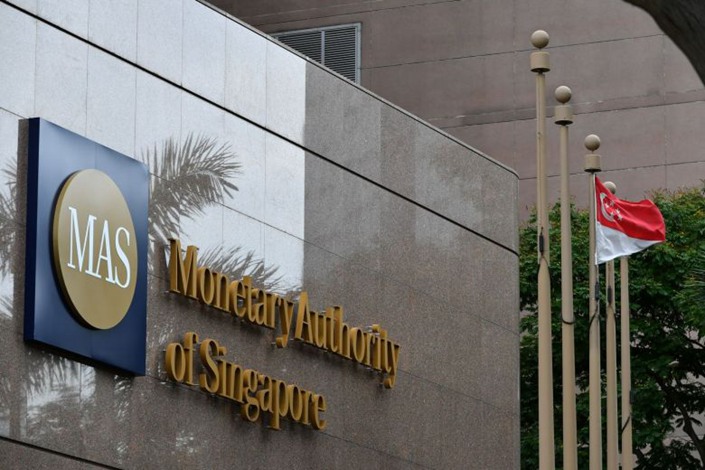The Monetary Authority of Singapore (MAS) has reinforced its role as a global leader in sustainable finance by pledging Singapore green infrastructure financing worth US$510 million to support Asia’s energy transition and low-carbon growth. This initiative aligns with the region’s urgent need to address climate change while simultaneously building resilient economies.
This financing will channel capital toward renewable energy, sustainable transport, and eco-friendly urban infrastructure. It also reflects Singapore’s commitment to strengthen cross-border collaboration and position itself as a hub for green finance in Asia.
Asia’s Growing Need for Green Infrastructure Financing
Asia is one of the most vulnerable regions to the impacts of climate change. Rising sea levels, worsening air pollution, and increasing demand for energy pose significant risks to long-term development. According to the Asian Development Bank (ADB), the region requires an estimated US$1.7 trillion annually in infrastructure investment, of which a substantial portion should be allocated to green and sustainable projects.
Singapore green infrastructure financing helps address this gap by mobilizing public and private funds into projects that reduce carbon emissions and build climate resilience. The US$510 million pledged by MAS may seem modest compared to total needs, but it sets a precedent for other financial hubs to take action.
By prioritizing financing for clean energy, sustainable mobility, and energy-efficient buildings, Singapore is signaling that green investments are not just environmental obligations but also economic opportunities.
Key Areas of Investment
The Singapore green infrastructure financing initiative is designed to target three major sectors:
Renewable Energy Development
Much of Asia still relies on coal and fossil fuels. Singapore’s funding aims to accelerate solar, wind, and hydropower projects across emerging economies. Countries like Indonesia, Vietnam, and the Philippines are expected to benefit significantly, as they have abundant renewable resources but face financing challenges.
Sustainable Transport Systems
Urbanization is booming in Asia, but with it comes rising congestion and emissions. Investment in electric mobility, modernized rail systems, and public transport infrastructure will be crucial. By supporting sustainable transport, Singapore is ensuring cities can grow without worsening carbon footprints.
Climate-Resilient Urban Infrastructure
From flood management to energy-efficient construction, cities need infrastructure that can withstand climate risks. Financing will be directed toward smart grids, water systems, and urban planning that integrates green spaces. This supports both environmental sustainability and public health.
Why Singapore Leads in Green Financing
Singapore has positioned itself as a regional hub for sustainable finance. The MAS launched its Green Finance Action Plan in 2019, emphasizing capital market innovation, regulatory clarity, and international partnerships. The city-state has since introduced taxonomies for green bonds and sustainability-linked loans, providing investors with frameworks that enhance transparency and credibility.
The current Singapore green infrastructure financing pledge reinforces its leadership role. By working with regional partners, Singapore can leverage its strong financial ecosystem to drive scalable projects across Asia. This benefits not only environmental outcomes but also solidifies Singapore’s competitiveness as a financial center.
Investor Confidence and Market Opportunities
Green infrastructure financing is increasingly seen as a profitable investment avenue. A growing number of institutional investors are aligning portfolios with Environmental, Social, and Governance (ESG) principles. The US$510 million from Singapore is expected to crowd in additional private capital, creating multiplier effects.
Projects funded under Singapore green infrastructure financing will also reduce long-term risks. By mitigating exposure to fossil fuel volatility and regulatory pressures, investors gain more stable returns. Additionally, governments can reduce fiscal pressure by tapping into blended finance models where public funds de-risk private sector involvement.
Challenges in Green Infrastructure Financing
Despite positive momentum, challenges remain.
- Project Pipeline Readiness: Many Asian countries lack bankable green projects due to weak feasibility studies or unclear regulations.
- Policy Alignment: Consistent policies across borders are required to attract long-term financing.
- Capacity Building: Technical expertise is still limited in several markets, slowing implementation.
The success of Singapore green infrastructure financing depends on addressing these structural issues. Regional collaboration, supported by institutions like ADB and ASEAN, will be critical to ensure financing translates into real impact.
The Road Ahead for Asia’s Green Transition
The MAS initiative comes at a time when Asia’s economies are balancing post-pandemic recovery with climate commitments. With growing international pressure to meet net-zero targets, Singapore green infrastructure financing represents both leadership and necessity.
Moving forward, more countries will need to develop national green finance frameworks. Private sector players—banks, asset managers, and insurers—must also adapt business models to seize opportunities in green lending, bonds, and investment funds.
Ultimately, Singapore’s move highlights a broader truth: sustainable infrastructure is not only about protecting the planet but also about ensuring long-term economic resilience.
Conclusion
The US$510 million Singapore green infrastructure financing initiative underscores the city-state’s proactive role in shaping Asia’s future. By channeling funds into renewable energy, sustainable transport, and climate-resilient infrastructure, Singapore is positioning itself as a catalyst for regional transformation.
For Asia, the message is clear: green growth is no longer optional. It is the pathway to stability, prosperity, and global competitiveness.
Read More






 Saturday, 13-12-25
Saturday, 13-12-25







